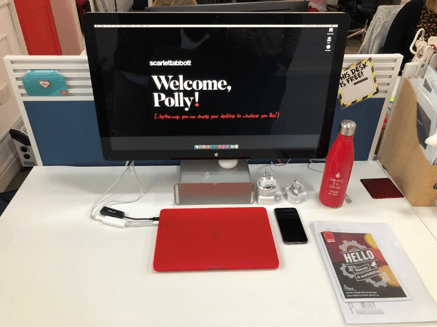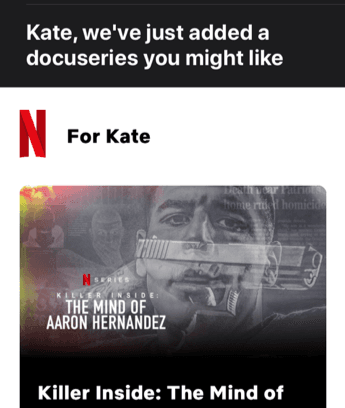


Following the wildly successful Year in Review, Spotify has launched ‘personalised pet playlists’ – curated selections of songs designed to bring calm to anxious animals, tailored to both your listening habits and the attributes of your four-legged friends.
It got us thinking about the explosion of personalised messaging. Is data-driven tailoring steering us into better decisions or is it manipulative? And what are the employee engagement gains?
It stands to reason that the more we know about people, their habits and their preferences, the more we can target and tailor our messaging. But with great power comes great responsibility. A decade spent honing how to aggregate our newsfeeds, based on our activity, ostensibly means Facebook can offer a better product. But the increasing unease we feel towards social media speaks to an intrinsic feeling of violation. Personalisation treads a fine line.
Emails that contain the recipient’s first name in the subject line have, on average, a 5.2% better open rate. And yet, when a salesperson repeats our name in a cold call (seven times is the recommendation) we hate how pushy it feels.
So, if personalisation runs the risk of feeling invasive, why does it also have the potential to be so effective?
“One reason targeted messages with extreme personalisation are so effective is because the self is an attention magnet.” This is the view of lead behavioural scientist Lindsay Kohler. “Take a group photo for example. What’s the first thing you do? You scan it, looking for and studying yourself, before taking in the rest of the picture.” So, you do still have to work to grab people’s attention but targeted messages have cut through and, once you’ve got it, you’ll hold it for longer if it’s self-relevant.
You can use personalisation to great effect when welcoming new starters. Taking the time to tailor your welcome to them can lead to a more effective uptake of early messaging, positive company perception and faster adoption, truly getting you, and them, off to a good start.

As communicators, the foundation of successful engagement is to know our audience. Today, we’ve never had so much access to the data that helps us do that. But data and preferences are one thing. Actual delivery is another.
The IC audits we conduct for our clients are revealing a common thread. Colleagues want bite-size content about what matters most to them. In other words, make it relevant. No matter how well other divisions are doing (setting aside any competitive sparring) if you work in a team it’s likely that you want to hear about things that directly affect you first, followed by your division, followed by group, followed by other divisions. But in the interest of tailoring to the audience, can you skew the content too far?
Preference-based content is becoming ubiquitous. If you’re a heavy Netflix user, you’ll have seen how your recommended viewing has been tweaked and refined to reflect your most consumed content – endless murder documentaries anyone?

But does this just build echo chambers? When you end up cultivating a feedback loop of similar information, are you missing the bigger picture? It’s certainly something IC pros need to be aware of when it comes to using the apps and technologies that aggregate the employee feed.
The perfect personalisation balance comes at the cross section where data and the user both meet and interact.
But is that enough? Don’t format and treatment matter too? Absolutely.
Think about your skimmers, swimmers and deep-divers when you consider storytelling. Use multiple treatments to help its reach. Communication which allows for proactive user input gives a sense of control (and feels slightly less Big Brother). Short read? Think about livening your copy with visual formatting to make it work harder, like decision trees. Want the detail? Link off to more information.
Or, to consider Spotify’s pet playlist, are your readers relaxed or energetic, shy or friendly, apathetic or curious? Understanding personalities helps you be clear on what you need to write. Apathetic readers need you to make it easy for them, whereas curious readers could benefit from the challenge of a puzzle to work out.
Are you interested in finding out how personalisation could work best in your organisation? Get in touch to talk targeting and tailoring.